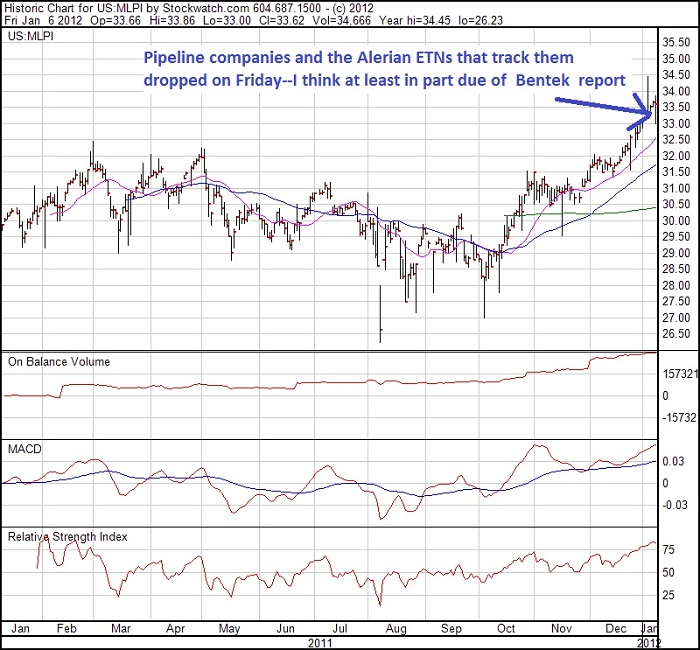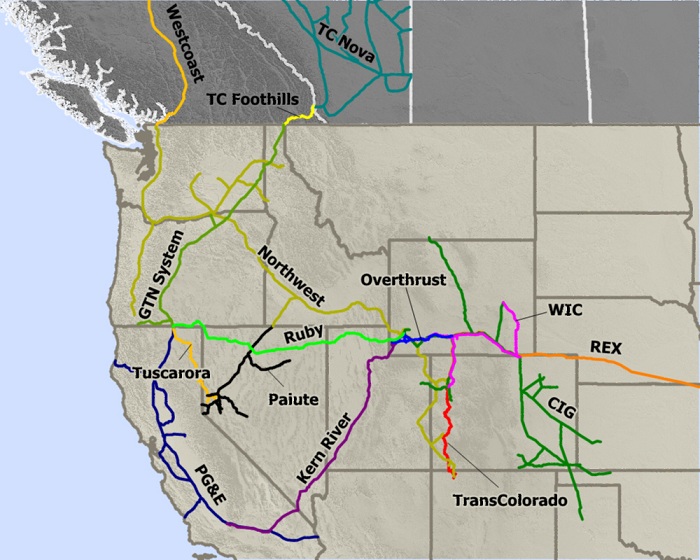Each January I look back at last year’s trading and remind myself what cost me money. In Part 1, I wrote about what MADE me money. In this article, I look at what decisions, what trading patterns, didn’t work out? What lessons did I learn–again?
So what cost me money in 2011?
1. BUYING PENNY EXPLORATION STOCKS IN THE OPEN MARKET. I capitalized this because the best time, and one could argue the ONLY time, to buy a drill-punt stock is when it raises money; equity; issues shares to the public (or even better, to a select group of institutions).
These junior exploration stocks have BIG appetites for capital—especially the offshore drill punts where wells cost $30-$200 million, or the true penny stock companies trying to do expensive onshore resource plays, where raising money for a $5 million horizontal well can double the amount of shares outstanding.
The underwriters always win with these stocks; they will sell it down to get a good deal, or price, for a financing. These guys are the pros; they know what the real value of the stock is. They try to make sure their best clients, the buyside institutions who play the junior resource market, will make money on these financings.
Sometimes you and I—retail—get to buy these financings, and that is generally the best time to buy these junior, high-risk, high-reward plays. But sometimes retail gets cut out and brokerage firms rely on their analysts to be bullish (within reason now...;-)); stimulating demand and getting retail to buy the stock in the open market, and help ensure their institutions make money.
So instead, buy around the same time they do—whether you can get the financing or not. There’s a good likelihood that will be the best price for a profitable trade.
2. BUT—what ALSO cost me A LOT of money (on paper) in 2011 was not selling those financings I bought–once the stock traded below the financing price, or issue price as the market calls it. THIS IS A HUGE LESSON I LEARNED AGAIN (I already knew this but like many mistakes, I learn it many times…).
My experience is that once a financing goes more than a few pennies below issue price for a couple of days—sell the stock; especially if it’s a “bought deal” financing, in which the underwriter/brokerage firm MUST buy the entire financing with its own capital.
I know there are experienced investors who would disagree with me. But when the underwriters can’t hold the financing price (especially in a bull market), it’s a sign of weakness and I saw it happen this year with Xtreme Coil (XDC-TSX; XTCMF-PINK) and Tuscany Drilling (TID-TSX; TIDZF-PINK). Once those stocks broke below the issue price, they fell DRAMATICALLY—40%-50%.
Now, I still own these companies as operationally, they are doing very well, and I think they’re going higher. But my point is that a year after these financings, they are all still at least 20% below what I paid for them.
This is no different than having a stop-loss on your trading. Generally I have a mental 20% stop loss on my trades, but on these financings it would be 5%-10%.
———————————————————————————————————————————————
No Oil Left Behind
Oil producers today finish drilling reservoirs knowing that a full 60% of the oil is still left in the ground.
Sometimes as much as 90% remains… despite using today’s most advanced recovery technologies.
One North American energy services company is changing that – in a big way.
Its patented technology literally extends the life – and profits – of oil wells.
And its stock could be the breakout play of 2012. To get the full story, simply follow this link.
———————————————————————————————————————————————-
3. BAD DRILL RESULTS cost me money in 2011.
Now, this is the junior markets, and many stocks in which I invest live or die by the drill bit. I do the research to find the good teams with good assets at good valuations, but they don’t all work out. And the important thing is I didn’t have a large amount of money in any one of these plays.
My sense from some subscribers is that they put too much money into the riskiest plays with binary outcomes—hit or miss. Jackpot or zero. That’s not how I build wealth in this kind of market. There are really good bull markets in the juniors where you can sell your penny stock drill punts into a speculative fervour (think Sept 2010-April 2011), but they don’t happen every year.
Torquay Oil Corp. (TOC.A-TSX) had very little success in the field and their stock shows it. It lost 85% of its value from its high.
Sterling Resources (SLG-TSXv; SGURF-PINK), Bengal Energy (BNG-TSX; BNGLF-PINK) and PetroFrontier (PFC-TSX; PFRRF-PINK) also had less-than-hoped-for drilling results which caused the stocks to have big drops from their highs in 2011.
4. Lost Opportunity Cost–Waiting for stocks to come back or return to a price that I think I deserved to buy them at. Out of the early October downturn, I was watching two market leaders—Legacy Oil and Gas (LEG-TSX; LEGPF-PINK) as a producer, and Canyon Energy Service (FRC-TSX; CYSVF-PINK) as a services play (they’re the leading junior fracking company in Canada).
As these stocks started to rocket out of their early October lows, I watched. And watched. And watched. I put a price in my head that I think I might be able to buy them at; that I deserved to buy them at. But with momentum, they just kept going up.
Sometimes it’s hard to jump on a moving train, but if you want to own market leaders, the bellwether stocks that the institutional money flows go to FIRST, and HARDEST, you just have to buy them out of the downturns—even if it’s for a quick 20% trade (and out of those severe downspikes, you really only want to own the leaders).
Sadly, I don’t own either stock right now. They’re well managed companies with fantastic growth rates. Too much thinking on my part.
5. Buying high priced stocks that had a corporate miscue; or rather, not selling them right after a miscue (for some reason there is rarely just one miscue). I actually prefer high valuations vs. low. Expensive stocks generally stay expensive—the market rewards them faster and more heartily–and cheap generally stay cheap. Once the market pegs a stock as a winner or loser, it’s hard for management to shake that tag.
The big risk in buying a stock with premium valuation is that they have an operational mis-step and the market then gives them a standard or even a discounted valuation.
Xtreme Coil (XDC-TSX; XTMCF-PINK) experienced delays in getting its new, high-margin service rigs to market, impacting calendar Q4 2011 and Q1 2012 financials. I like their position in the market.
They actually have a new MINING rig they are developing with a mining major for development drilling, but hasn’t been approved for commercial use yet. The stock dropped 50% from my purchase price through the year.
LOOKING FORWARD INTO 2012
I’m actually quite excited about 2012. The market and the world’s economies threw everything it could at oil, and the global oil price—which is now Brent, not WTI–had its highest average price ever, even more than in 2008.
Junior oil stocks and junior services stocks were not so lucky. Despite great fundamentals, they lost investors on average about 20% last year, and many were down 50%. I see that sentiment turning around the leading junior/intermediate plays are likely the trade of the year in 2012. Valuations are low and oil prices—and service contracts—are high.
Despite the fact that 9 of the 10 top performing stocks in 2011 in the junior/intermediate oil and gas sector in Canada are liquid rich natural gas stocks, I am not tempted to go there—except for two that subscribers will hear about in the next couple weeks.
I continue to see oil in that golden range of $80-$120 per barrel, where exploration success and growth gets rewarded. I think 2012 will see a lower average price for oil than 2011, but overall market sentiment and risk tolerance will be improved, lifting valuations.
Junior oil stock investors do NOT want to see oil over $120/barrel—history says we then have an INVERSE relationship between oil and oil stocks as the market prices in recession.
Canada is a good place to be right now — It has a fragmented junior market (meaning lots of little companies), the most transparent trading system/stock exchange in the world.
In Canada you get 8 cent stocks that go to 90 cents as well as $2.50 stocks that go to $15.
The charts on some of the leading Canadian intermediates are turning positive—notably Legacy Oil and Gas (LEG-TSX).
But a lot of charts are still negative. Interestingly the charts on the major US and Canadian service companies—Halliburton, Schlumberger in the US and Trican, Calfrac and Canyon Services—have broken out of recent downtrends, but are just moving sideways.
I told subscribers on January 3 I expect to be fully invested by third week of January in anticipation of a bull run…which has started. I expect it to last at least into March—our regular seasonal top.
I’m a position trader, with a goal of making 50%-100% on every single trade over a 9-18 month window. But one last thing that cost me money in 2011 was not selling some of my positions (especially ones that did not have imminent catalysts) during this seasonal top last year.
Note to self: sell more at the top this year.
– Keith
P.S. Two days ago, in an interview with Fox News — I gave my views on the oil markets, how oil’s trading, and the situation in Iran. It’s a short segment – under 5 minutes and done via Skype — but I think you’ll appreciate it. Click here to watch the video on Fox News Online.
— 2011 PORTFOLIO TRACK RECORD DISCLOSURES —
48.2% average gain on closed trades — stocks sold in 2011
36% average gain on open trades — stocks initiated, or first bought, in 2011
36.7% average gain on open trades — stocks bought in 2009, 2010, and 2011
by +Keith Schaefer














